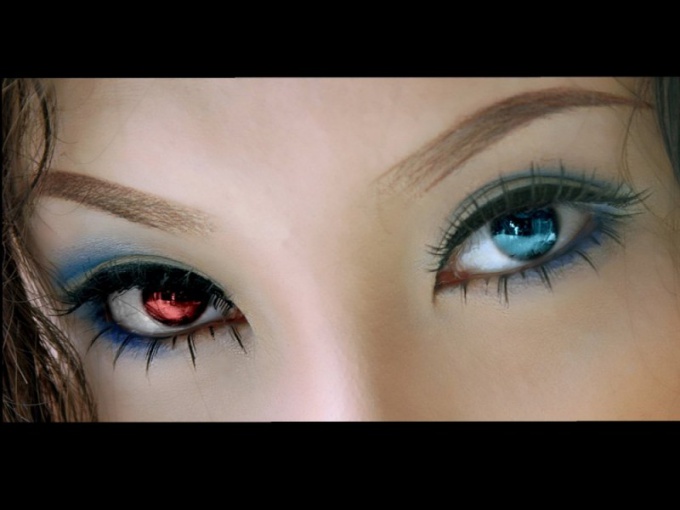The color of the iris depends on the amount of pigment and blood vessels. Pigments can talk about any disease, such as yellow or brown pigment occurs in diseases of the liver. The colors of natural pigments depends on genes, ethnicity, race.
Iris color is determined by mixing the color of blood in the vessels and mixing color pigments, for example, green is a mixture of yellow and blue. Yellow eyes people have no, but if the blood vessels of the iris is pale in color, it can turn a yellow-green color. If the concentration of melanin the iris gets black tint, gray is a variation of blue.
It happens that a person's eyes different colors. This phenomenon is called heterochromia. The difference in color appears due to the shortage (excess) of melanin. This phenomenon occurs both in humans and in animals (cats).
Heterochromia is of two kinds: full and partial. Complete heterochromia occurs in cases when the color of the iris is completely different from the color of the "iris" of the other eye. Partial heterochromia is very rare, about 4 people out of 1 million, then one part of the "iris" is different from the remaining part, i.e. one eye combines the two colors.
Heterochromia occurs after fertilization of a cell, it has no effect on human health. People with this phenomenon see and perceive everything around it, like all the others. Most often it occurs in women than in men. There were times that heterochromia was acquired due to illness or injury (waardenburg syndrome or Hirschsprung's disease).
People with heterochromia get some flavor, among them many famous and popular singers, Actresses: Kate Bosworth (pie hateframe), David Bowie (pseudoliterary due to injury), Christopher Walken, etc.
